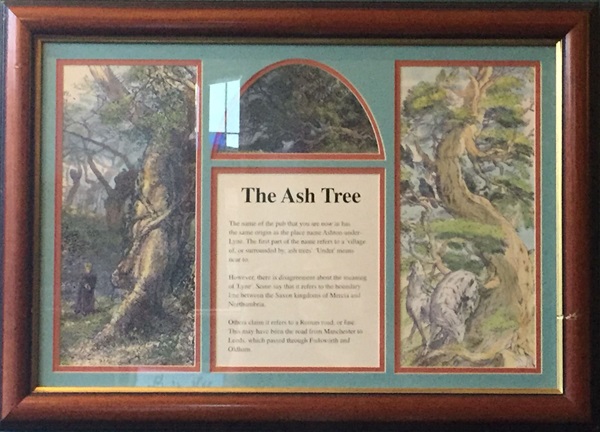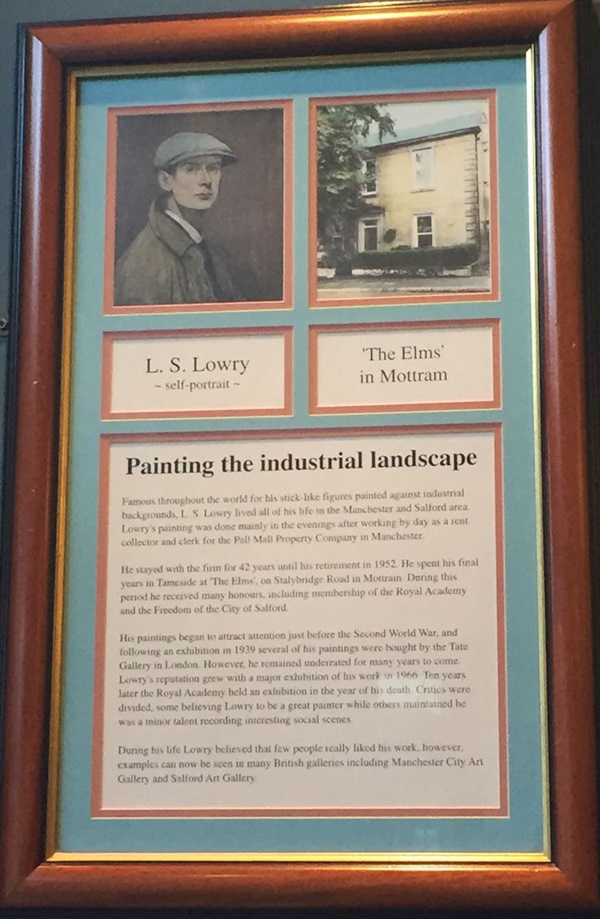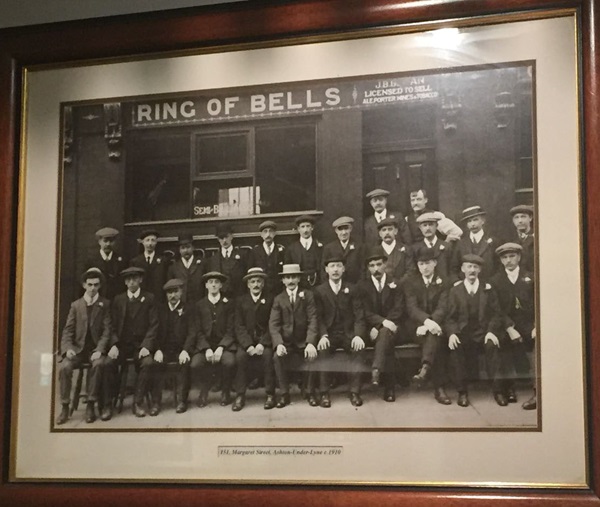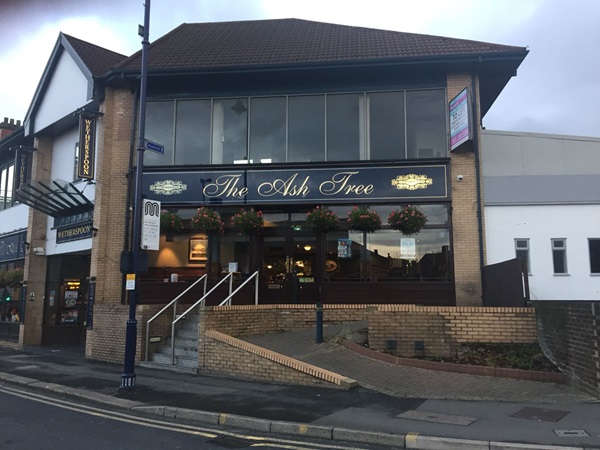9–11 Wellington Road, Ashton-under-Lyne, Lancashire, OL6 6DA
This name refers to the ash trees which gave the town the first part of its name. ‘Ton’ is a settlement, while’ lyne’ is probably a corruption of ‘lyme’ – once the name of the area north of Ashton.
Illustrations and text about The Ash Tree.

The text reads: The name of the pub that you are now in has the same origin as the place name Ashton-under-Lyne. The first part of the name refers to a ‘village of, or surrounded by, ash trees’. ‘Under’ means near to.
However, there is a disagreement about the meaning of ‘Lyne’. Some say that it refers to the boundary line between the Saxon kingdoms of Mercia and Northumbria.
Others claim it refers to a Roman road. This may have been the road from Manchester to Leeds, which passed through Failsworth and Oldham.
Prints and text about LS Lowry.

The text reads: Famous throughout the world for his stick-like figures painted against industrial backgrounds, LS Lowry lived all of his life in the Manchester and Salford area. Lowry’s painting was done mainly in the evenings after working by day as a rent collector and clerk for the Pall Mall Property Company in Manchester.
He stayed with the firm for 42 years until his retirement in 1952. He spent his final years in Tameside at The Elms, on Stalybridge Road in Mottram. During this period he received many honours, including membership of the Royal Academy and the Freedom of the City of Salford.
His paintings began to attract attention just before the Second World War, and following an exhibition in 1939 several of his paintings were bought by the Tate Gallery in London. However, he remained underrated for many years to come. Lowry’s reputation grew with a major exhibition in the year of his death. Critics were divided, some believing Lowry to be a great painter while others maintained he was a minor talent recording interesting social scenes.
During his life Lowry believed that few people really liked his work, however, examples can now be seen in many British galleries including Manchester City Art Gallery and Salford Art Gallery.
Prints and text about local poets.

The text reads: Samuel Laycock was a leading Lancashire dialect poet of the mid 19th century, who was actually born in Yorkshire in 1826. He wrote most of his poetry in Stalybridge. A Little Bit on Both Sides, published in 1856, sold 2,500 copies in just a few weeks.
During the early 1860s Samuel Laycock published poems inspired by the Cotton Famine, which was particularly severe in Tameside.
He was himself one of the many cotton workers laid off. Bowton’s Yard and Bonny Brid are two of his best known poems.
John Critchley Prince born in Wigan in 1808, was another well known Lancashire dialect poet. During his teenage years he moved to Hyde and married a local girl.
Prince lived there for many years, where he and his family endured hardship and adversity. Despite considerable difficulties, Prince published five volumes of highly successful poetry.
Left: Samuel Laycock
Above: John Critchley Prince
A photograph of Daisy Nook View, Ashton-under-Lyne, c1910.

A photograph of 151 Margaret Street, Ashton-under-Lyne c1910.

External photograph of the building – main entrance.

If you have information on the history of this pub, then we’d like you to share it with us. Please e-mail all information to: pubhistories@jdwetherspoon.co.uk